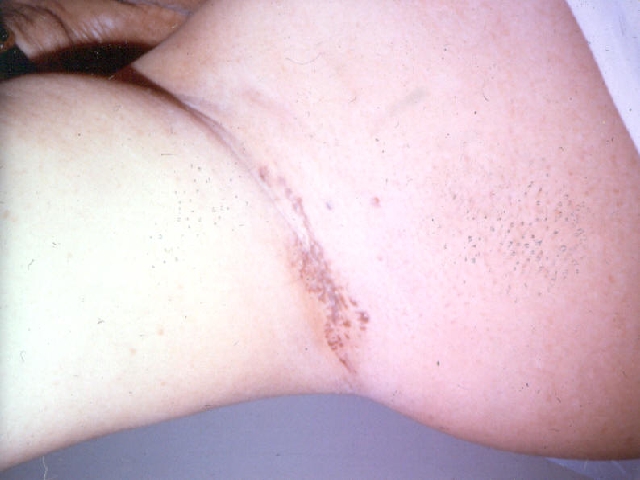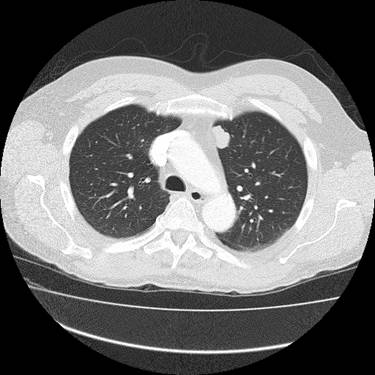CORRECT DIAGNOSIS:
Axillary granular parakeratosis
DISCUSSION:
Axillary granular parakeratosis was first described by Northcutt et al in 1991. The exact etiology is not known. Most of the case reports have reported an excessive and recurrent exogenous topical stimuli (deodorants, antiperspirants, shampoos, bath soaps) in body folds (axilla, submammary regions). Authors suggest that an irritation of the keratinocytes in the upper stratum granulosum occurs and leads to altered differentiation with the persistence of the keratohyalin granules, clinically, corresponding to hyperkeratotic papules. Others believe that there is an underlying disorder of cornification.
Due to the patient’s presentation of a unilateral axillary rash on the affected side of her stroke our case further supports the theory of excessive deodorant use in the occlusive environment leading to granular parakeratosis.
TREATMENT:
Treatment usually entails discontinuation of the offending agent. However, the use of retinoids has been reported. The lesion usually resolves completely without further sequela.
REFERENCES:
Northcutt, A. D., Nelson, D. M., et al. (1999). Axillary granular parakeratosis. Journal of the American Academy of Dermatology, 24(4), 541-544. PMID: 10192517
Mehregan, D. A., Vandersteen, P., Sikorski, L., & Mehregan, D. R. (1995). Axillary granular parakeratosis. Journal of the American Academy of Dermatology, 33(2 Pt 2), 373-375. PMID: 7656958
Wohlrab, J., et al. (1999). Submammary granular parakeratosis: An acquired punctate hyperkeratosis of exogenic origin. Journal of the American Academy of Dermatology, 40(5 Pt 2), 813-814. PMID: 10207884
Metze, D., et al. (1999). Granular parakeratosis: A unique acquired disorder of keratinization. Journal of Cutaneous Pathology, 26(7), 339-352. PMID: 10539556
Kossard, S., et al. (1998). Axillary granular parakeratosis. Australian Journal of Dermatology, 39(3), 186-187. PMID: 9760810
Webster, C. G., et al. (1997). Axillary granular parakeratosis: Response to isotretinoin. Journal of the American Academy of Dermatology, 37(5 Pt 1), 789-790. PMID: 9342151



